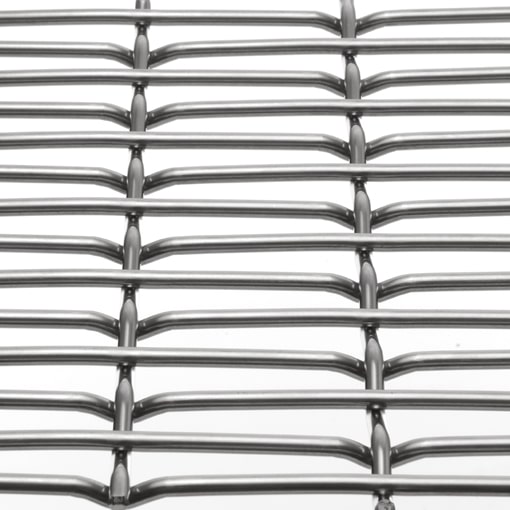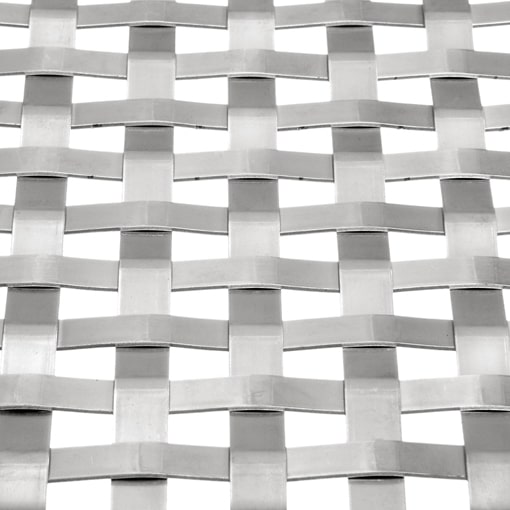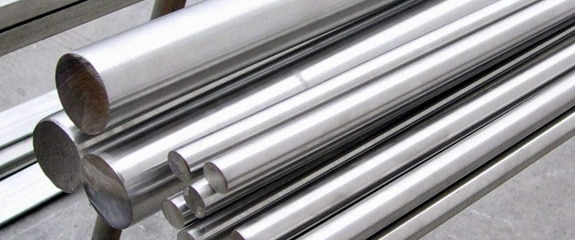Architectural Wire Mesh vs. Industrial Woven Wire Mesh
Woven wire mesh is one of the most versatile materials in the world, whether you are applying it to an industrial or a decorative application. We understand that as an architect when you use wire mesh you have one goal in mind: creating a one-of-a-kind aesthetic that onlookers will remember for years to come.
But to properly leverage woven wire mesh to weave your vision into reality, you must understand that there are two variants of mesh seen throughout the world of architectural design: architectural wire mesh and industrial woven wire mesh. Having said that, you must also understand the differences between the two mesh variants to ensure your design accurately depicts your vision.
So, how exactly do architectural wire mesh and industrial woven wire mesh differ?
W.S Tyler is a leading supplier of woven wire mesh with over 140 years of experience and is here to help you understand how to properly apply woven wire mesh to your architectural design process.
To that end, this article will establish:
- What architectural wire mesh is
- What industrial woven wire mesh is
- How architectural wire mesh and industrial woven wire mesh compare
- How architectural wire mesh and industrial woven wire mesh differ in price
What Is Architectural Wire Mesh?
Architectural wire mesh is a series of metal wires woven together to form architectural mesh panels designed to serve as decorative design elements that can enhance most architectural design processes. Applications include parking garage facade, interior wall design, interior ceiling design, and much more.
 |
 |
 |
Now, because architectural mesh is subjected to various corrosive conditions, such as airborne chlorine around indoor pools and airborne sea salt around oceanside applications, it is typically constructed from an architectural grade 316 stainless steel. Additionally, parameters such as the mesh pattern, panel size, percentage of open area, and wire diameter can be customized to ensure your architectural mesh panels weave your vision into reality.
What Is Industrial Woven Wire Mesh?
Industrial woven wire mesh is a network of metallic wires that undergo a stringent weaving process to form pore openings that are both rigid and accurate. Industrial mesh can be constructed from a wide range of alloys, such as stainless steel, plain steel, Hastelloy, nickel, and titanium, but is typically made from 304 or 316 stainless steel, as they provide the best balance of performance and cost-effectiveness.

To that end, the precise pore openings of industrial woven wire mesh make it ideal for a wide range of applications such as particle size analysis, filtration, and screen printing. Having said that, an industrial mesh can be used for architectural applications; however, it is not common.
In fact, the only time industrial wire mesh is used for architectural purposes is when an architect wants to use the granular, dull, matte finish that it delivers.
How Do Architectural Wire Mesh and Industrial Woven Wire Mesh Compare?
Typically, architectural mesh is fabricated to have a bright, lustrous, smooth surface. The decorative wires undergo a different drawing process than an industrial-grade wire.
That said, an industrial-grade wire is going to have a more granular, dull finish to it.
The good thing about the smooth, lustrous wires of architectural wire mesh is that, when used for architectural design, airborne dirt and debris rests on the surface of the mesh and are easily removed. If you were to use a granular industrial woven wire mesh, these airborne particles would eventually get lodged in the nooks and crannies of the wires' surface.
As a result, industrial woven wire mesh can become dirty quicker, potentially distracting onlookers from the intended aesthetic. And while a rain shower can generally remove unwanted debris from the smooth surface of architectural mesh, industrial mesh panels would need to be power washed to thoroughly remove unsightly accumulations of dirt and debris.
Another key element when comparing architectural mesh and industrial mesh is that, when fabrication is completed, architectural mesh undergoes an ultrasonic bath before being prepped for shipment. During this ultrasonic bath, all the oils and debris that become adhered to the mesh during the drawing and weaving process are removed, leaving you with a smooth, chemical-free mesh upon arrival.
Now, industrial woven wire mesh typically doesn’t undergo this cleaning process. As oils are used to facilitate the drawing process of both mesh variants, the individual wires of industrial mesh have a sticky, tacky coating.
As it must go through several manufacturing and shipping processes, industrial woven wire mesh can become fairly dirty before arriving on-site.
How Do Architectural Wire Mesh and Industrial Woven Wire Mesh Differ In Cost?
As a result of the drawing process architectural mesh must undergo to create a smooth, shiny surface, it often costs more to integrate into an architectural design process than industrial woven wire. On average, architectural mesh costs approximately $20-25 per square foot, whereas industrial woven wire mesh costs approximately $18-20 per square foot.
Regardless of which mesh variant you use for your design, you will need to account for all the system hardware, which will play a role in the overall cost of the mesh system. This includes any framing required for the panels as well as the necessary mounting hardware.
Get To Know Architectural Wire Mesh Hands-On
In the world of architectural design, it is essential that you understand the difference between architectural wire mesh and industrial woven wire mesh.
Architectural mesh is an assortment of smooth, lustrous metallic wires that are woven to form decorative panels. Industrial mesh is a network of wires the undergo a heavily regulated weaving process to form precise mesh openings.
While architects can use industrial woven wire mesh to capture a duller, granular industrious aesthetic, architectural wire mesh is predominately used as it provides the characteristics needed to make a design stand out.
To better understand how the dozens of architectural mesh patterns can benefit your architectural design process, you can and should request architectural mesh pattern samples. Doing so will give you a chance to experience the possibilities of architectural mesh hands-on.
With over 140 years of woven wire mesh experience, W.S. Tyler is here to help you navigate the various architectural mesh patterns and identify which one will best capture your vision.
Read the following article to learn more about architectural mesh samples and how they can help you identify which mesh pattern best suits your needs:
About Ronnie Brown
Ronnie is the Content Writer for W.S. Tyler and has four years of experience as a professional writer. He strives to expand his knowledge on all things particle analysis and woven wire mesh to leverage his exceptional writing and graphic design skills, creating a one-of-a-kind experience for customers.




